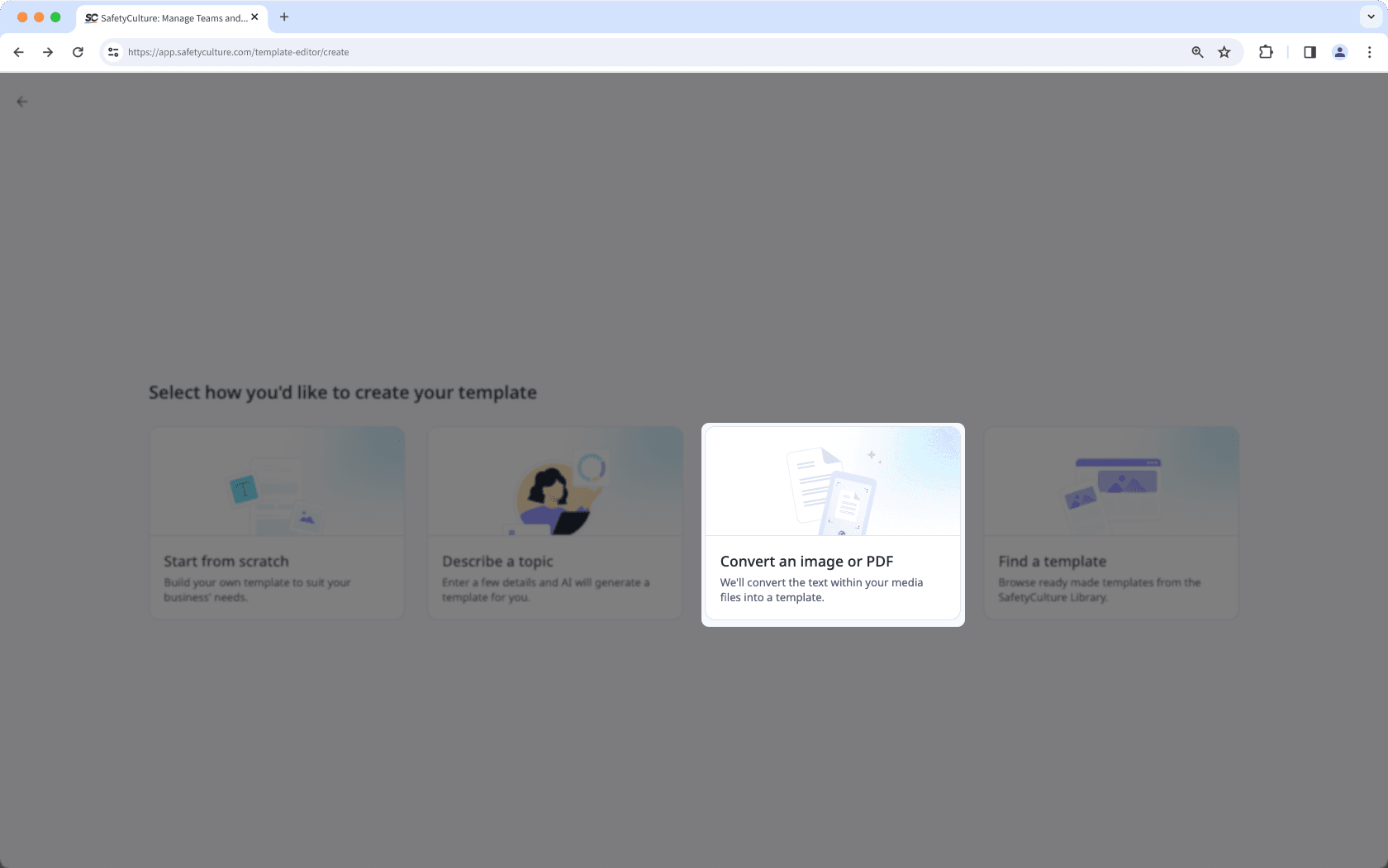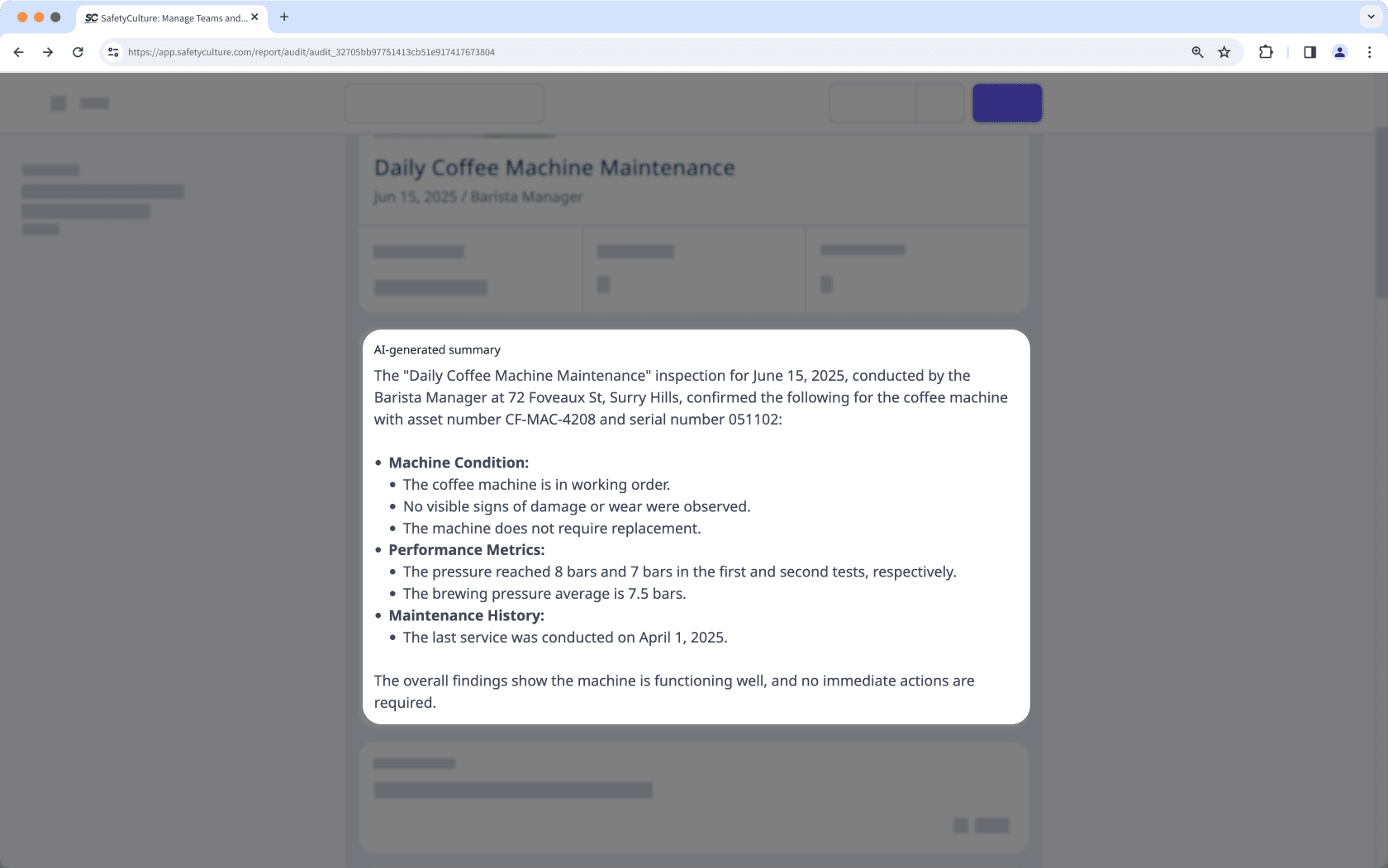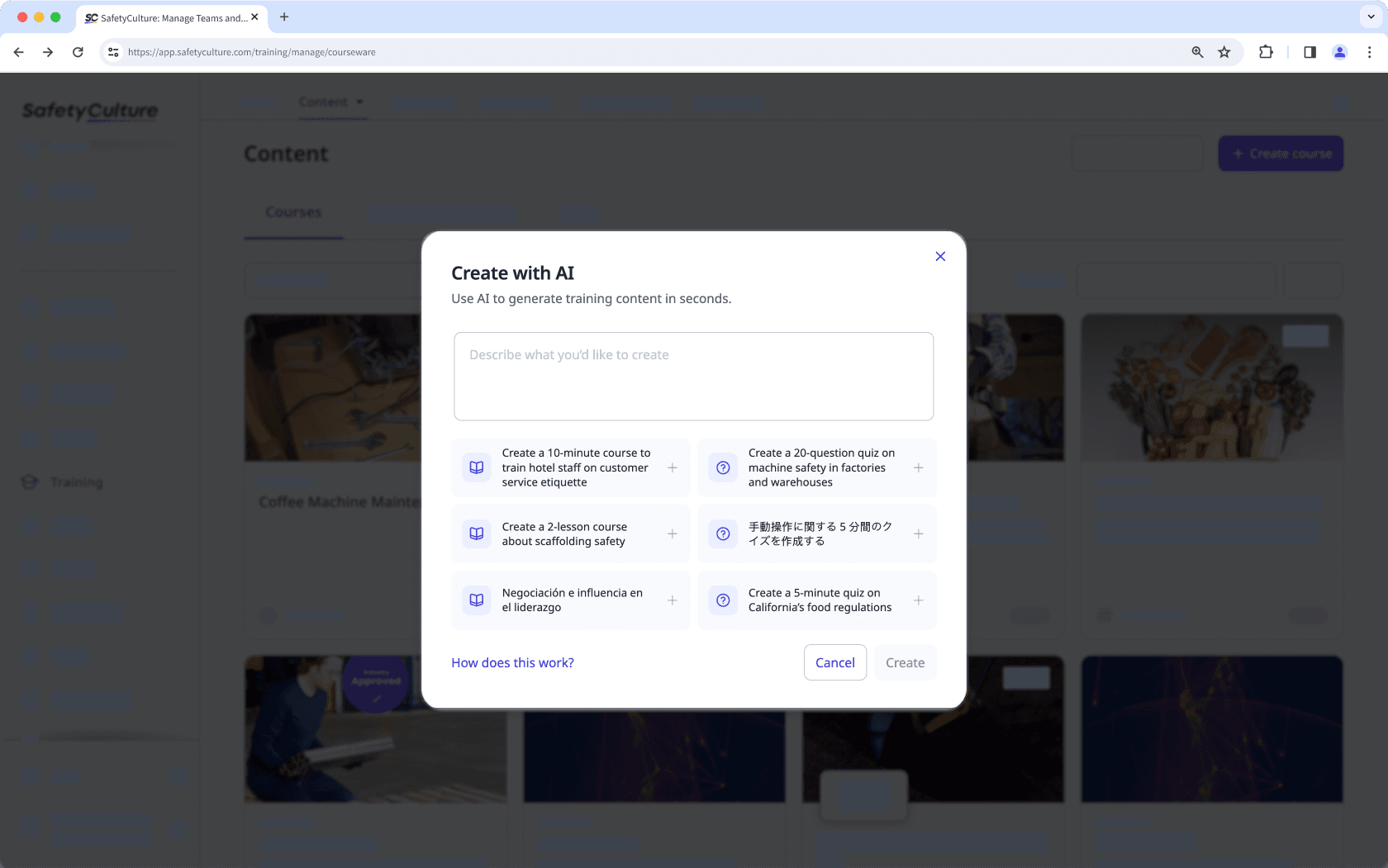- Using SafetyCulture
- AI in SafetyCulture
- AI in SafetyCulture
AI in SafetyCulture
Learn how SafetyCulture uses artificial intelligence (AI) to streamline workflows across the platform.How is AI used in SafetyCulture?
AI in SafetyCulture helps teams work smarter by making it easier to create, edit, and understand the information they work with every day. Integrated across key areas of the platform, AI reduces manual effort and supports faster, more consistent outcomes.
With these tools in place, your team can save time, improve performance, and get more value from the information already collected in SafetyCulture.
AI features in SafetyCulture
Work smarter by using a secure, AI-powered assistant to ask questions, access information from your data, and accomplish tasks across your organization.
Upload images or PDF files of existing forms or checklists so the AI engine can convert them into usable templates for your organization.

Enter a description of your topic or take photos of existing materials to create a template with content and questions that are relevant to your organization's workflow.
Configure your report layout to generate a summary for each inspection report with the AI provider.

Upload PPT, PDF, and DOCX files of training and compliance documents to convert them into course content.
Enter a description of your topic or take photos of existing materials to generate a course, lesson, or lesson slide.

Enter a topic, relevant keywords, or even paragraphs of text to create AI-powered quizzes with customized questions.
Use the AI editor to expand, simplify, or adjust the tone of your text to improve your lesson content.
Translate your courses to any desired language using an AI translation service.
Use an AI-powered assistant in Documents to ask questions in plain language and get direct, reliable answers pulled from the most up-to-date version of your files.
How does SafetyCulture handle my data with AI?
At SafetyCulture, we're committed to protecting your data while using powerful AI features. This section outlines the measures we've taken to ensure our AI is secure, responsible, and compliant with global standards.
Responsible data use
We develop AI features with privacy and control in mind, ensuring your information isn’t used to improve or train AI models. You always stay in control of how your data is accessed and used.
Your data stays yours: We don't sell or repurpose customer data.
No data leakage: AI interactions are securely processed with strict access controls.
No foundational model training: Our contractual agreements with AI sub-processors such as OpenAI and Anthropic explicitly prohibit the use of customer data to train their models.
Data sovereignty: Customer data is hosted in-region and in line with local laws and regulations. We also use various sub-processors to provide the AI functionality. These sub-processors may process your data outside of your region.
Permission-aware features: AI tools fully respect SafetyCulture's permission structures, ensuring users only access content they are authorized to see.
Data protection
We follow security best practices across the platform, including how we build and run AI features. Your data stays encrypted and stored according to global standards, and these safeguards are built in by default.
End-to-end encryption: All data is encrypted both in transit and at rest.
Guardrails & human-in-the-loop: AI features include safety mechanisms and user oversight to prevent misuse.
Certifications: SafetyCulture complies with SOC 2 Type II and ISO 27001 standards.
What information is processed by AI services?
To assist in workflows across different platform areas, we use the following AI services to process data:
Amazon Textract by Amazon Web Services (AWS): Used to convert media content from image and PDF files into a set of text descriptions.
Pixabay: Used for themed images in course creation.
Google's Cloud Translation AI: Used to translate a course into any language.
OpenAI: Used for text or images entered in the course creation prompt, highlighted text when using AI text editor in lessons, text used as template description, and report layouts for generating inspection report summaries.
Google Document AI and various models hosted in Amazon Bedrock: Used to analyze and respond to queries made to Ask AI in Documents.
Various models hosted in Google Vertex, Amazon Bedrock, OpenAI, and Anthropic: Used to analyze and respond to queries made to the AI Assistant.
Frequently asked questions
Yes, we will continue to explore ways to incorporate AI features in our products as the technology evolves. If you have any feedback or suggestions, we'd love to hear them from you.
No, your data isn’t used to train any AI models. SafetyCulture has opted out of using customer data for model training across all third-party services we use. This includes data processed by AWS and OpenAI, translation content sent to Google Cloud Translation, and anything sent through the Bing Search service.
Was this page helpful?
Thank you for letting us know.